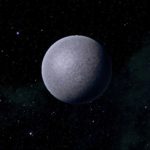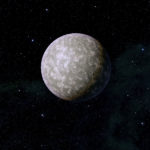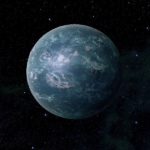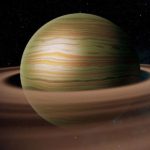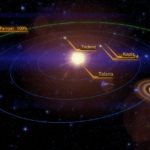System Specs:
- Stellar Mass: 1.00 Sol Masses
- Stellar Class: G
- Luminosity: N/A Sol
- Planets: 4
- Moons: 1
- Asteroid Belts: 0
- Asteroids: 0
- Objects: 0

Hoplos has abundant resources both in its explored and unexplored regions. Trident is a settled world and Kopis has a Prothean site, though there are no element zero deposits there.
–
Planets Directory:
- Talaria
- Makhaira
- (Kopis)
- Trident
- Aegis
–
Talaria:
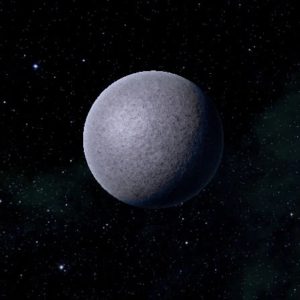
- Orbital Distance: 0.1 AU
- Orbital Period: 0.1 Earth-years
- Keplerian Ratio: 0.1
- Radius: 3,569 km
- Day Length: 0.1 Earth Years (tidal lock)
- Atmospheric Pressure: Trace atm
- Surface Temp: 908 °C
- Surface Gravity: 0.2 g
- Mass: 0.062 Earth-masses
A rock with all traces of atmosphere burned away, Talaria orbits the star Hoplos at a blistering pace: every 36 days. Though tidally locked, even its twilight belt and shaded side are too barren to support life. With so many resources on its sister planet Trident, Talaria has largely been ignored by the galactic surveying community.
–
Makhaira:
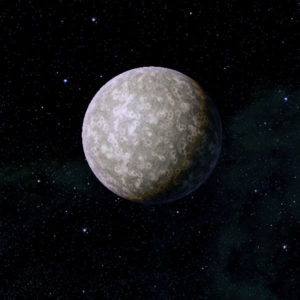
- Orbital Distance: 0.5 AU
- Orbital Period: 129 Earth-days
- Keplerian Ratio: N/A
- Radius: 4,733 km
- Day Length: 34.9 Earth-hours
- Atmospheric Pressure: Trace atm
- Surface Temp: 206 °C
- Surface Gravity: 0.5 g
- Mass: 0.273 Earth-masses
- Satellites: >1
A small rock planet, Makhaira’s thin atmosphere and high albedo keeps it from being much hotter than it is. The crust is high in sodium oxide, giving the planet a whitish tinge.
–
Kopis:
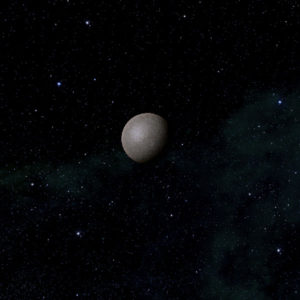
- Orbital Distance: 0.55 km
- Orbital Period: N/A Earth-years
- Keplerian Ratio: N/A
- Radius: 1,733 km
- Day Length: 21.3 Earth-days
- Atmospheric Pressure: Trace atm
- Surface Temp: 51 °C
- Surface Gravity: 0.1 g
- Mass: 0.007 Earth-masses
Makhaira’s largest moon, Kopis, is a desolate place with an extremely thin atmosphere. Its crust is largely silica-based, and there are no signs of water. Like its parent planet, its high albedo keeps it from being a total inferno, and when occluded by Makhaira, its temperatures can be nearly tolerable. Its low gravity can easily be countered by a vehicular or personal mass effect field for comfortable exploration.
–
Trident:
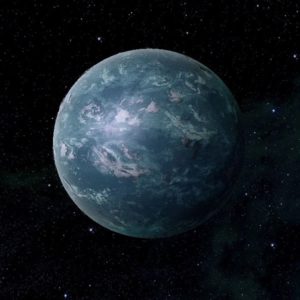
- Orbital Distance: 2.0 AU
- Orbital Period: 2.8 Earth-years
- Keplerian Ratio: 1.02
- Radius: 6,905 km
- Day Length: 27.6 Earth-hours
- Atmospheric Pressure: 1.4 atm
- Surface Temp: 27 °C
- Surface Gravity: 1.1 g
- Mass: 1.28 Earth-masses
- Colony: human
Capital: New Cousteau, founded 2144 CE, population 6,800,000
A human-dominated world with over 95% of its surface covered by salt water, Trident is home to a dazzling array of life. The oceans are filled with creatures ranging from tiny bivalves to mammoth vertebrates unequaled even by Earth’s whales and ichthyosaurs. Small archipelagos create what little land there is, and its valuable real estate is fought over constantly.
Underwater extraction operations have recovered a number of valuable minerals from the ocean floor, including iridium, uranium, and dust-form element zero. A largely lawless world, Trident is home to a rogues’ gallery of unethical corporations exploiting the resources of the planet and actual rogues — criminals, slavers and mercenaries — working the shadows.
TRAVEL ADVISORY: Due to extreme weather conditions, all traffic to the surface is grounded. Trident spaceport control predicts this condition will persist until the end of hurricane season.
–
Aegis:

- Orbital Distance: 4.5 AU
- Orbital Period: 9.6 Earth-years
- Keplerian Ratio: 0.989
- Radius: 53,682 km
- Day Length: 11.6 Earth-hours
- Atmospheric Pressure: N/A atm
- Surface Temp: N/A °C
- Surface Gravity: N/A g
- Mass: N/A Earth-masses
A hydrogen-helium gas giant, Aegis was the site of an unparalleled cosmic event roughly 1.8 million years ago. An extrasolar body about 200 square kilometers in size was drawn into Aegis’ gravity well and struck the Jovian planet, blasting enough dust and material into orbit to create a ring.
An urban legend has grown over this event. The story goes that if the extrasolar body (usually called a comet) was unaffected by the gravity well of Aegis, it would have coincided with an orbit of Trident and created an extinction-level event on that planet. Prevailing scientific opinion holds that this is an exaggeration at best.
–
–
video

